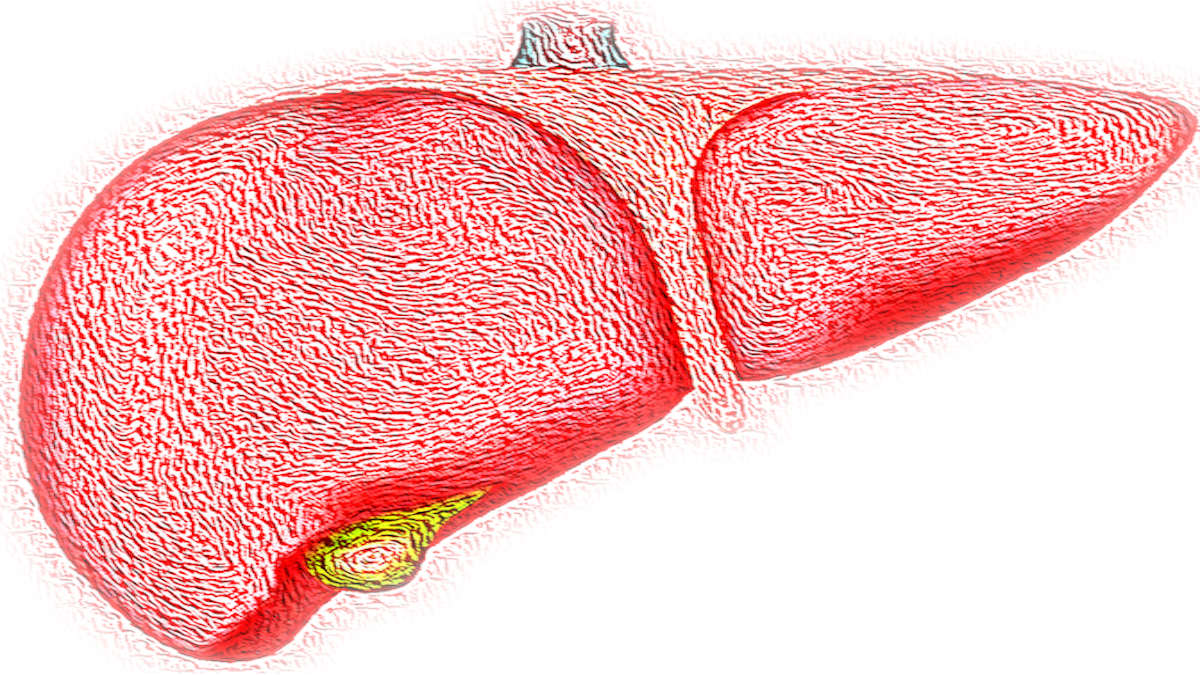No Matter Your Health Troubles: Always Put Bile Flow First

Supporting bile flow is perhaps a surprising winner for the first thing to do in a restorative health sequence. As you start to understand bile’s role in the body’s health and ability to function, the consequences of poor bile flow will become equally shocking.
Before I begin, if you’ve already had your gall bladder removed there is no need to despair. We can work with what has happened and go forward with confidence.
The Gall of It All
Bile is the fluid which stores and concentrates in the gall bladder. It’s an alkaline substance produced in the liver. Its two primary functions are related to detoxification and digestion.
Bile and Detoxification
The liver filters more than 250 gallons of blood a day, taking care of several vital tasks along the way. One of them is removing fat-soluble toxins and waste products from the blood. Bile binds toxins and excess hormones coming out of the liver and carries them out of the body.
Bile is concentrated and stored in the gall bladder right along with the toxins and excess hormones it is holding on to. From there it flows out of the body through the intestines. When there is not adequate bile flow from the gall bladder, the liver toxins are absorbed back into the system rather than being removed. This is hard on the liver, and the toxin build up in the rest of the body can contribute to a myriad of issues.
For example, the body will try to remove liver toxins through the other major exit substance, the urine. However, the kidneys are not designed to handle fat soluble waste, and they can become clogged. (It’s kind of like when you try to scrub a greasy pan with the scrubby part of a dish sponge, and the fat gets clogged in the pores of the scrubby surface.) Over time, poor bile flow can result in kidney stress, under-functioning, and eventually overwhelm, which can lead to high blood pressure.
Other potential effects of poor bile flow include build-up of heavy metals, mycotoxins, environmental toxins, or hormone imbalances. Anything that is supposed to leave the body from the liver can compound when there’s poor bile flow. Creating adequate bile flow should be considered a first step when addressing these issues.
Bile and Digestion
Bile has two primary functions related to digestion. When the acidic products of the stomach empty into the top of the small intestine, the gall bladder is prompted to squeeze an amount of bile into the area. One effect of this is that the bile neutralizes the acidic stomach contents and makes them an acceptably neutral pH to continue through the intestines, which aren’t designed to handle acid.
Another effect of the alkaline bile spurt is that the clash of acid meeting base creates a blast to the stomach contents, which provides a final breaking apart of the food molecules into smaller, useable units that are familiar to the body. Also, bile breaks down dietary fat and makes it absorbable.
When Your Gall Gets Stalled
Having inadequate bile flow may or may not feel like something. When it is noticeable, symptoms can include diarrhea or loose stool, itchy skin, passing gas, light colored stool, weight problems, fatigue, cravings, or nausea. It can also cause high or low cholesterol, nutrient deficiencies, IBS, colitis, or duodenal ulcer.
Before you consider significant diet changes, you will want to correct your digestion, including bile flow, because what you are able to digest will largely dictate what you are able to eat.
Extreme Bile Dysfunction
Bile that becomes hardened in the gall bladder forms gallstones. This is an advanced state of poor bile flow. However, commonly regarded “gall bladder attack symptoms” such as upper right abdominal pain, nausea, and vomiting do not typically occur until the problem is severe and gallstones have been present for some time. Even this situation has been successfully addressed by many with determined, consistent effort to thin the bile.
Factors that contribute to poor bile flow
Factors that contribute to poor bile flow are as follows:
- Estrogen excess (e.g. estrogen-containing birth control or hormone replacement therapy)
- Consuming processed foods
- Low stomach acid
- Insufficient fat in the diet
Correcting Bile Flow
Many people can use a unique supplement called Beet Flow to get bile flow moving as the ingredients in Beet Flow thin the bile. Beet Flow is typically taken three times per day with meals. Dosing varies from person to person, and Beet Flow is not appropriate while pregnant or nursing. Protocol monitoring is heightened for certain people, especially those with high blood pressure, because correcting bile flow may very quickly correct blood pressure. In that case, when blood pressure normalizes, medication already in use can cause the blood pressure to go too low.
For tougher situations, when bile is quite thick or already clumped, we consider additional ways to thin the bile as well as a tactic to dilate the bile ducts. Bile ducts are the tubes going from the gall bladder to the small intestine. Making the tubes wider can help thick bile get out more easily. Many people use a coffee enema, or a coffee suppository called Xenoplex to accomplish this.
We can work together to help you support your bile flow. We review your symptoms and your saliva pH, as well as your health history and medications. Then, we decide what diet changes would be immediately appropriate, address any contributing factors, and we also choose a supplement protocol to match your situation. We stay in close touch as you monitor yourself and implement the plan; especially if you have a medical condition, a severe bile flow issue, or take medications.
 Michelle Gerencser
Michelle Gerencser 